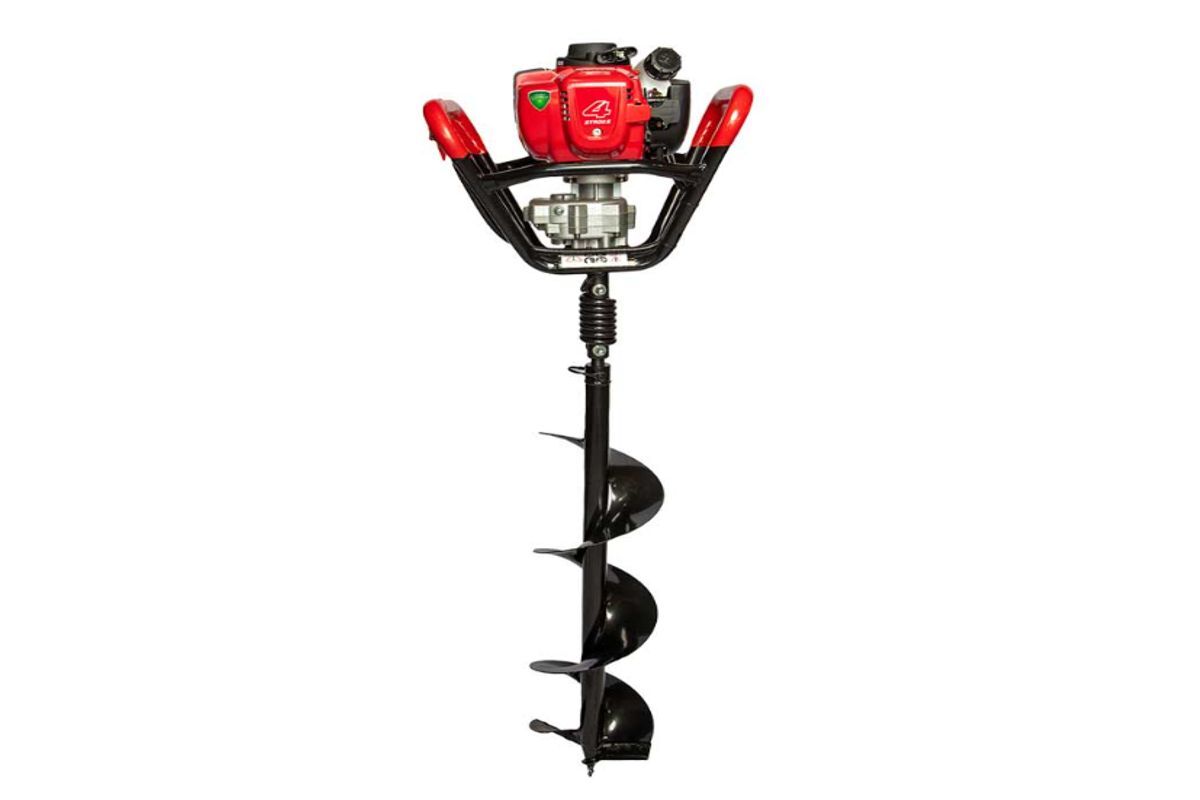Bullmax Honda GX35 Post Hole Digger
Product Description
This Bullmax earth auger is designed to be operated by one person and has been engineered for professional and domestic use. Powered by the Honda GX35 engine that drives the Bullmax commercial quality gearbox. The frame has been ergonomically designed featuring rounded surfaces, with no protruding parts, a throttle trigger that turns off as soon as it is released and an ignition kill switch.
This machine is the complete package with all the accessories included.
- 100mm x 800mm auger drill.
- 150mm x 800mm auger drill.
- 200mm x 800mm auger drill.
- 450mm extension bar.
- Cushioning spring with shear bolts.
-
Powered by Honda GX35 4 stroke engine 35.8cc
-
Rated power 1.21KW @ 7,000 RPM
-
Heavy duty gearbox, engineered for commercial use
-
Auger speed 200RPM @ engine speed of 6,000 RPM
-
Replaceable cutting blades with hardened tungsten tips
-
100mm, 150mm, 200mm drill sizes x 800mm depth
-
450mm extension bar
-
Impact cushioning Spring
-
Shear bolts; for safety
-
Machine head; engine, gearbox & frame GW 10kg
-
Designed and Assembled in Australia
-
Certified by Honda Australia, Honda 3 year warranty
-
Bullmax one yar warranty for Auger, Frame, Gearbox and Attachments
What is an inverter generator?
An inverter generator is a type of generator that produces AC (alternating current) power by converting DC (direct current) power using advanced electronic circuitry. Inverter generators are designed to be more efficient and quieter than traditional generators, making them popular for camping, RVing, and other outdoor activities where noise and portability are important factors.
Unlike conventional generators, inverter generators are designed to produce clean and stable power that is suitable for sensitive electronics such as laptops, smartphones, and other electronic devices. They also have a smaller and more lightweight design compared to traditional generators, making them easier to transport and store.
What size generator do I need?
Inverter generators typically u se gasoline as fuel, but some models can also run on propane or natural gas. They come in a range of sizes and power outputs, from small portable models that produce a few hundred watts to larger models that can produce several thousand watts of power. The size of the generator you need depends on several factors such as the power requirements of the appliances and devices you want to run, the duration of use, and the type of generator you choose. Here are the steps to help you determine the appropriate size of generator for your needs:
- Determine the total wattage of the appliances and devices you plan to power simultaneously. You can find this information on the label or in the manual of each device.
- Add up the wattage of all the devices you want to run simultaneously. This gives you the total wattage required.
- Decide how long you need to run the generator. If you plan to use it for extended periods, you may need a larger generator to ensure that it can sustain the load.
- Consider the type of generator you want. Portable generators typically have lower wattage capacities than standby generators.
- Choose a generator with a wattage capacity that is equal to or greater than the total wattage required by your devices. It's better to choose a generator with a slightly higher capacity to ensure that it can handle any sudden surges in power demand.
In summary, to determine the appropriate size of generator you need, you need to calculate the total wattage of the devices you plan to run, consider the duration of use, and choose a generator with a wattage capacity that can handle the total load.


